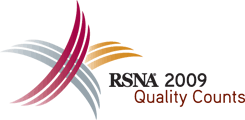
Abstract Archives of the RSNA, 2009
LL-IN2111-B10
Health Level 7: Clinical Document Architecture (HL7-CDA)—Finally a Solution for Seamless Clinical Data Transmission between Different Radiology Information Systems
Scientific Posters
Presented on November 29, 2009
Presented as part of LL-IN-B: Informatics
Rakesh Prafulchandra Patel MBBS, BSc, MRCS, Presenter: Nothing to Disclose
Debbie Sze Wan Wai MBChB, Abstract Co-Author: Nothing to Disclose
Arun Kumar Dheer MD, FRCR, Abstract Co-Author: Nothing to Disclose
A possible solution for seamless integration to facilitate the data flow between various healthcare IT systems will be described in our poster. We aim to present the core features and benefits of HL7 Clinical Document Architecture and demonstrate the use of available cost effective integration engine solutions that will seamlessly integrate HL7 and legacy systems.
HL7-CDA is an XML-based markup standard intended to specify the encoding, structure and semantics of clinical documents for the exchange of clinical data. Clinical radiology is practised globally with digital imaging facilitating image data transmission. The availability of many different Healthcare IT systems has resulted in significant incompatibility of IT systems between institutions. Dedicated integration and pairing of IT systems is being implemented with suboptimal results and at considerable expense. Standardised flow of clinical data remains a major barrier to e-health.
These barriers were recognised at the outset of digitisation in Healthcare with the creation of Integrating the Healthcare Enterprise and HL7 to find solutions to facilitate data exchange.
CDA is not restricted by the method used to transfer the document enabling the architecture to be incorporated into any data transfer protocol. CDA documents can be utilised in HL7 message, DICOM, MIME, email attachments, http and ftp. The implementation of HL7-CDA will therefore allow a standards-based approach for the exchange of information and reduce the time and costs incurred in the development of custom integrated solutions.
The concept of having an agreed uniform CDA structure will help the exchange of clinical data across multiple Radiology Information Systems (RIS) and any other healthcare IT system. Within teleradiology, the availability of fast secure transmitted data such as patient clinical letters or lab data from hospitals will enable the reporting (tele) radiologist to formulate an informed opinion with immediate transfer of the report to the referring institutions RIS. The uptake of HL7 v3 is likely to be slow due to the cost of migration and integration with previous implementations of HL7 and legacy systems.
Patel, R,
Wai, D,
Dheer, A,
Health Level 7: Clinical Document Architecture (HL7-CDA)—Finally a Solution for Seamless Clinical Data Transmission between Different Radiology Information Systems. Radiological Society of North America 2009 Scientific Assembly and Annual Meeting, November 29 - December 4, 2009 ,Chicago IL.
http://archive.rsna.org/2009/8015052.html

